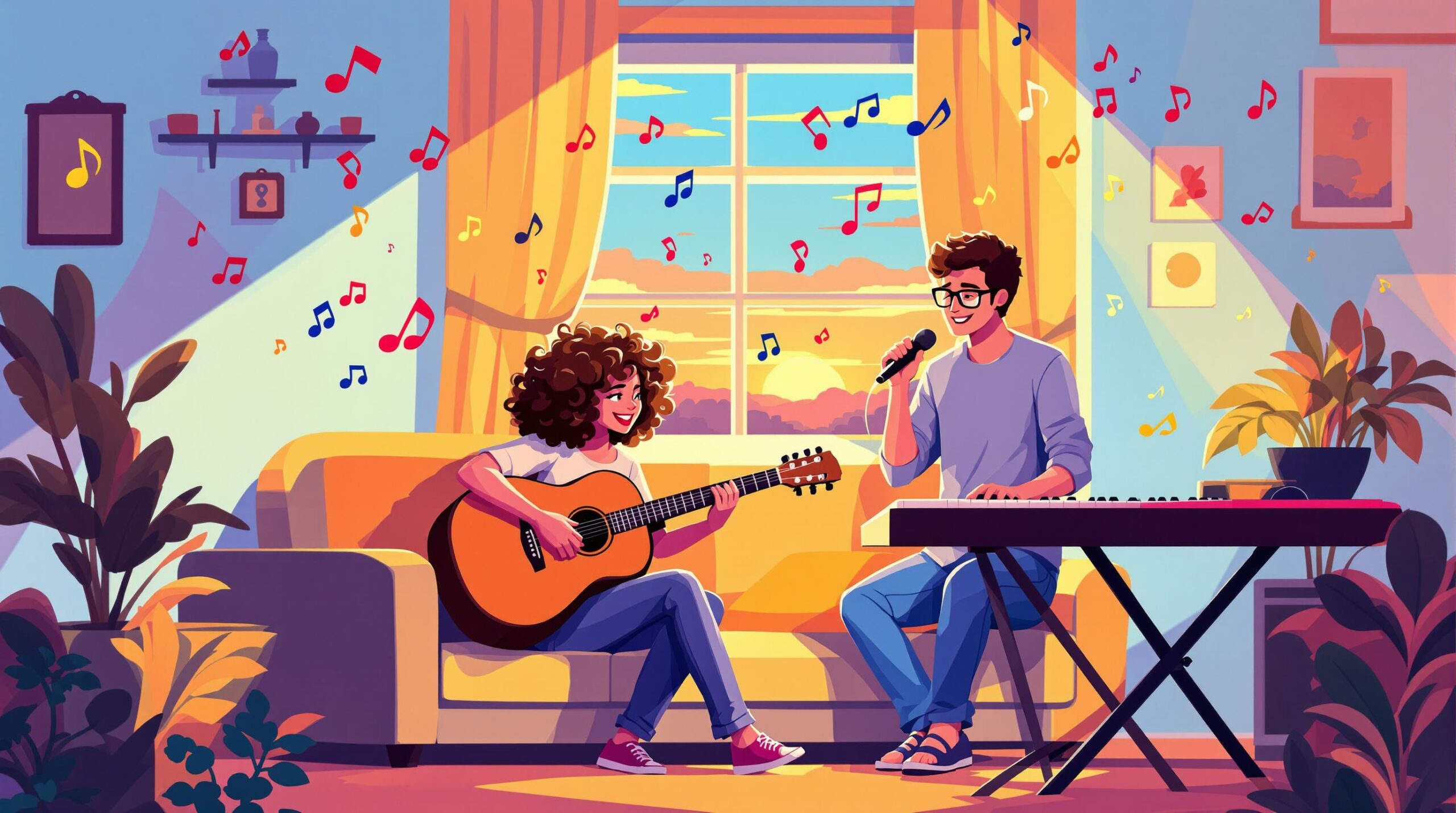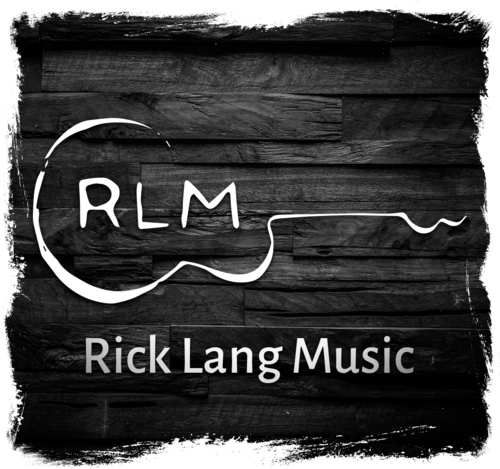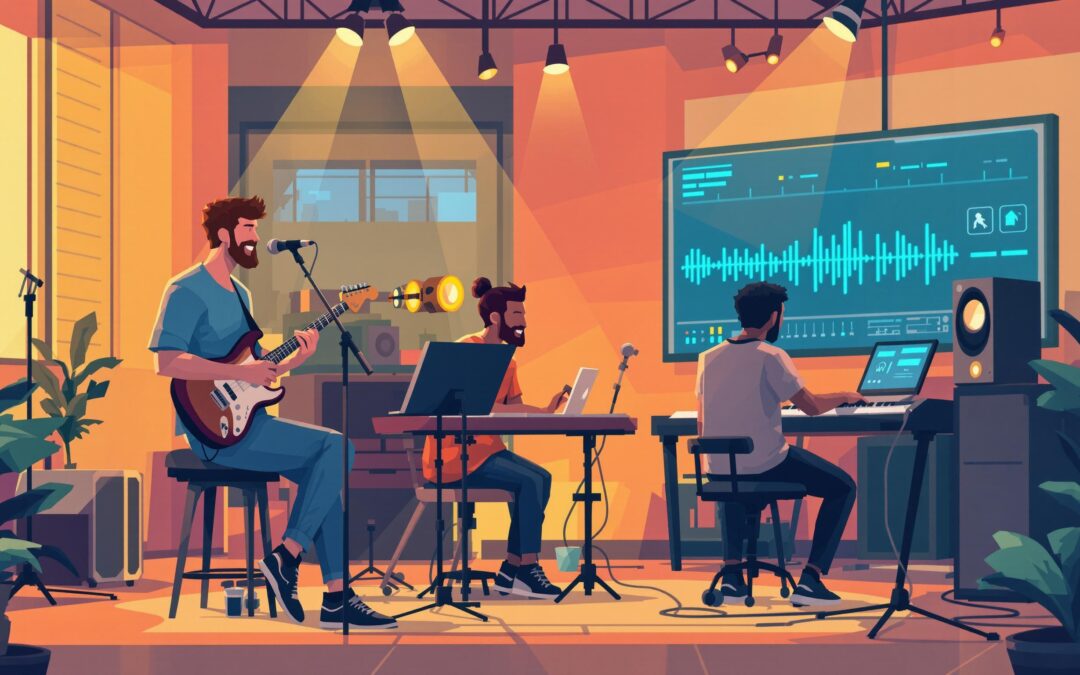Co-writing songs can boost creativity, improve productivity, and lead to better results. Successful collaborations often blend unique skills, perspectives, and experiences to create impactful music. Here’s how to get started:
- Why Co-Writing Works: Share the workload, overcome writer’s block, and expand your network while creating songs that reach broader audiences.
- Choosing Partners: Find collaborators with complementary skills, shared goals, and creative compatibility. Use online platforms like SongwriterLink or attend music events to connect.
- Setting Up the Process: Align on project goals, divide tasks based on strengths, and maintain clear communication to avoid confusion.
- Handling Disagreements: Revisit shared goals, seek compromise, or involve outside perspectives to resolve conflicts.
- Tools to Use: Platforms like Songcraft and SongPad simplify collaboration with features like real-time editing and chord suggestions.
Co-writing is a practical way to refine your craft, build connections, and create better songs. Ready to collaborate? Let’s dive in!
How to Co-write Songs Successfully
Choosing Your Co-Writing Partners
Pick collaborators who complement your strengths and share your creative goals. This can make your songwriting process more productive and enjoyable.
Meeting Other Writers
You can connect with potential co-writers both online and in person. Online platforms like SongwriterLink, Kompoz, and SoundBetter allow you to browse profiles and listen to samples of their work . For face-to-face connections, consider these options:
| Networking Avenue | Benefits | Best For |
|---|---|---|
| Music Events & Workshops | Personal interaction | Building local ties |
| Educational Settings | Access to varied skills | Improving abilities |
| Industry Meetups | Expanding your network | Professional growth |
Once you’ve found potential collaborators, take time to evaluate how well they align with your style and goals.
Checking Partner Fit
Before diving into a collaboration, it’s important to assess how well you and your potential partner might work together. Judy Stakee highlights:
"Cowriting helps shed light on exactly where you are in the development of your craft."
Here’s what to consider:
- Complementary Skills: If you’re great at crafting melodies but struggle with lyrics, look for someone who excels in storytelling. The Musicians Institute advises matching strengths to create balanced partnerships .
-
Creative Compatibility: Talk about your genre preferences, influences, and how you like to approach songwriting. Discuss timelines, goals, and how you envision the process.
"The right combination creates magic."
- Professional Alignment: Work with someone open to trying new songwriting techniques and exploring fresh ideas .
Strong collaborations happen when partners bring different perspectives while respecting each other’s contributions. As stated by the Musicians Institute, "Collaborative songwriting is an essential skill in the music industry, allowing songwriters to blend their unique talents, perspectives, and experiences to create memorable and impactful music."
Setting Up Your Co-Writing Process
Clear communication and a well-structured workflow can help avoid confusion and keep the creative process running smoothly. Once you’ve chosen your collaborators, it’s time to define how you’ll work together.
Agreeing on Project Goals
Before you start writing, sit down and align on your goals, expectations, and the creative vision for the project. This means deciding on the genre, theme, and the overall direction of your song .
Here are some key areas to define:
| Aspect | What to Define | Why It Matters |
|---|---|---|
| Creative Direction | Genre, style, mood | Keeps the songwriting approach unified |
| Target Audience | Listener demographics, platforms | Shapes lyrical and musical choices |
| Timeline | Deadlines, milestones | Helps maintain steady progress |
| Distribution Plans | Release strategy, platforms | Impacts production and marketing choices |
Assigning Writing Tasks
Divide tasks based on each writer’s strengths. For example, someone skilled with words could focus on lyrics, while another might craft melodies. When assigning roles, consider the following:
| Writing Component | Task Distribution | Collaboration Method |
|---|---|---|
| Lyrics | Lead writer with feedback | Shared document editing |
| Melody | Main composer with refinement | Voice memos or recordings |
| Arrangement | Joint effort | Live collaboration sessions |
| Production | Producer with group input | Studio or virtual sessions |
Being adaptable with roles can make a big difference. As one guideline explains:
"Each co-writer brings unique skills and perspectives to the table" .
To stay on track, consider these tips:
- Set up regular check-ins to review progress and adjust plans.
- Keep a record of decisions about song structure and arrangement.
- Stay open to fresh ideas and unexpected inspiration.
- Establish deadlines for each phase of writing.
Working Together Effectively
Good collaboration can turn challenges into progress.
Speaking Up and Being Direct
Share your ideas and concerns openly while maintaining respect for your co-writer.
| Communication Aspect | Best Practice | Why It Matters |
|---|---|---|
| Idea Sharing | Communicate clearly | Avoid creative roadblocks |
| Feedback | Be specific and constructive | Improve the song collaboratively |
| Concerns | Address issues early | Prevent larger setbacks |
"Listen as much as you talk. If you find one person dominating the talking, you probably aren’t going to get a great song. If you are a talker, monitor yourself. Be sure you are giving your co-writer space. If you are quiet, be sure you are speaking up. If you are a slow co-writer, communicate that. It takes everyone working together and sharing ideas to make a great song."
Clear, direct communication encourages equal participation and better results.
Listening to Your Co-Writer
Active listening is key to building trust. When your co-writer shares an idea, give them your full attention and respond thoughtfully .
Here’s how to listen effectively:
- Focus on what they’re saying without distractions.
- Ask questions to clarify their points.
- Acknowledge their ideas before suggesting alternatives.
- Take notes during brainstorming to capture every detail.
These small actions show respect and keep the creative flow alive.
Meeting Regularly
Consistent meetings help maintain focus and ensure progress. Anne Dayton emphasizes this:
"For the most part, we meet once a week, every week. We both clear our schedules and talk about whatever project we’re currently working on. We both have busy lives, and it’s easy to let things slip. Writing group never slips, because in this business, persistence is half the battle."
Plan meetings to review progress, discuss ideas, and set next steps. Customize the structure to fit your project, and treat these sessions as non-negotiable to keep the momentum going .
These practices set the stage for blending your ideas into a polished song structure.
sbb-itb-1c6af30
Writing Songs Together
When working collaboratively, having a structured approach allows songwriters to channel their creativity effectively into the process.
Generating Ideas
Start your songwriting journey by brainstorming with a specific creative direction in mind. As Gary Ewer highlights:
"Developing lyrics should always include a brainstorming session."
To make brainstorming more productive, try these techniques:
| Technique | How It Works | Why It Helps |
|---|---|---|
| Word Trees | Start with a central word and branch out to related terms. | Helps create interconnected lyrical themes. |
| Mind Mapping | Place the main topic in the center, then add branches for subtopics. | Makes relationships between ideas more visual. |
| Sensory Writing | Use all five senses to describe experiences. | Brings depth and vividness to your lyrics. |
For example, Kristin King’s word tree method, introduced in December 2020, shows how a simple word like "plane" can inspire a cascade of ideas. Words like "silver", "clouds", and "flight" led to lines such as "Like Joni singing about being free" .
Building Song Structure
Modern songs are built from key components that come together to form a complete piece. Collaboratively outline these elements:
- Introduction
- Verses
- Pre-chorus
- Chorus
- Bridge
- Middle eight
- Coda
Carefully arrange these parts to ensure smooth transitions and support the song’s emotional flow. A well-thought-out structure helps maintain listener interest and conveys the intended mood . Once the framework is in place, refine it further by clarifying each contributor’s role.
Splitting Writing Duties
Divide tasks thoughtfully to stay aligned with the song’s vision:
- Assign roles based on each person’s strengths.
- Schedule regular feedback sessions to stay on track.
- Be open to adjusting roles as the song evolves.
Consistent feedback ensures that everyone’s input feels cohesive and supports the shared vision .
Handling Disagreements
Managing disagreements is a natural part of co-writing. Even the best songwriting partnerships will face conflicts, but with mutual respect and clear communication, these challenges can lead to stronger results.
Refocusing on Shared Goals
When disagreements arise, it helps to revisit the shared goals for the song. Before diving into the creative process, establish clear intentions for the project. This shared vision can act as a guide when conflicts occur, making it easier to find common ground.
| Conflict Resolution Strategy | How to Use It | Why It Helps |
|---|---|---|
| Goal Review | Revisit the original objectives of the song | Keeps everyone aligned |
| Intent Discussion | Write down the agreed creative direction | Avoids misunderstandings |
| Progress Assessment | Regularly check on the song’s development | Identifies issues early |
Finding Compromise
Compromise starts with active listening and open dialogue. Jason Blume, a respected songwriting coach, highlights the power of a simple question:
"Help me to understand your concern"
This approach turns disagreements into opportunities for collaboration. To navigate creative differences:
- Ask your co-writer to explain their concerns about specific elements.
- Encourage them to suggest alternative ideas or solutions.
- Keep the focus on what’s best for the song, not personal preferences.
- Write down any agreed changes to avoid confusion later.
Seeking Outside Perspectives
If you’re stuck in a deadlock, outside feedback can provide clarity. Fresh insights often help resolve creative conflicts. Consider these options:
1. Industry Professionals
Music publishers or experienced songwriters can offer neutral advice based on their expertise. Their input often helps move past creative roadblocks.
2. Songwriting Workshops
Group feedback sessions bring diverse perspectives and practical solutions. Many successful collaborations have benefited from workshop feedback.
3. Additional Collaborators
Bringing in a new voice can sometimes bridge gaps. This works best when both writers remain open to fresh ideas while respecting the original ownership terms.
If no agreement can be reached, it’s okay to set the project aside. As Jason Blume wisely notes:
"Communication and compromise are typically the keys to resolving problems"
Prioritize maintaining professional relationships, even if a specific project doesn’t work out. This ensures future opportunities for collaboration while respecting each writer’s creative input.
Tools for Co-Writing
Co-writing can be a complex process, but digital tools make it easier by simplifying tasks and boosting collaboration. These modern tools are designed to streamline every phase of songwriting.
Online Writing Software
Here are some popular platforms for collaborative songwriting:
| Platform | Key Features | Best For |
|---|---|---|
| Songcraft | Real-time editing, chord suggestions, integrated chat | Comprehensive songwriting (used by 80,000+ writers) |
| SongPad | AI-assisted lyrics, syllable counting, rhyme tools | Quick and efficient writing sessions |
| Chorus | Genius lyric database, creative triggers, chord assistance | Finding inspiration |
| Ellipsus | Collaboration-focused, no AI involvement | Traditional songwriting methods |
"I adore Songcraft and use it constantly! I use it with my songwriting students and co-writers, and as a way to demonstrate the songwriting process in my YouTube videos" .
These platforms aren’t just tools – they’re a way to bring co-writers together and make the process smoother.
Writing Exercises
Sometimes, a little creativity boost is all you need. Try these collaborative exercises to overcome writer’s block and spark new ideas:
- News Report From a Snapshot: Pick a powerful image and write lyrics inspired by its story.
- Found Poetry: Use words or phrases from magazines or newspapers to create unexpected lyrical ideas.
- Story Chains: Take turns adding lines to build verses while keeping the theme consistent.
Additional Resources
For a more immersive collaboration experience, Soundtrap is worth exploring. It offers over 22,000 loops, cloud storage, built-in communication tools, and works across platforms.
Conclusion: Growing Through Co-Writing
Co-writing offers a way to sharpen your songwriting skills while shaping your musical identity. The Musicians Institute notes that collaborative songwriting often leads to music that breaks new ground and challenges creative limits . It’s a process that broadens creative perspectives and strengthens professional connections.
Collaborating doesn’t just refine your craft – it can also boost your career. Regular teamwork helps songwriters better understand their strengths and identify areas to improve, speeding up their professional growth.
Here’s how co-writing can drive progress in key areas:
| Growth Area | Impact | Development Opportunity |
|---|---|---|
| Creative Skills | Exposure to diverse writing styles | Experiment with new techniques |
| Professional Network | Expanding industry connections | Open doors to fresh opportunities |
| Productivity | Completing songs more efficiently | Streamline your creative process |
| Personal Growth | Improved communication and teamwork | Strengthen collaboration abilities |
"The important thing here is that everyone involved gets an opportunity to grow while turning out great songs that tell important stories. Seek writing collaborators who are stronger than you in some sense of the word." – Jim Grubbs
Each role in the writing process brings its own learning curve. Stay open to fresh ideas while keeping your artistic vision intact. The best partnerships come from balancing receptiveness to new methods with staying true to yourself.
Think of co-writing as running a startup together – a mix of perspectives and expertise working toward a shared goal . This approach blends creativity with professionalism, helping you grow both as an artist and in your career. Use these strategies to keep evolving as a songwriter.



